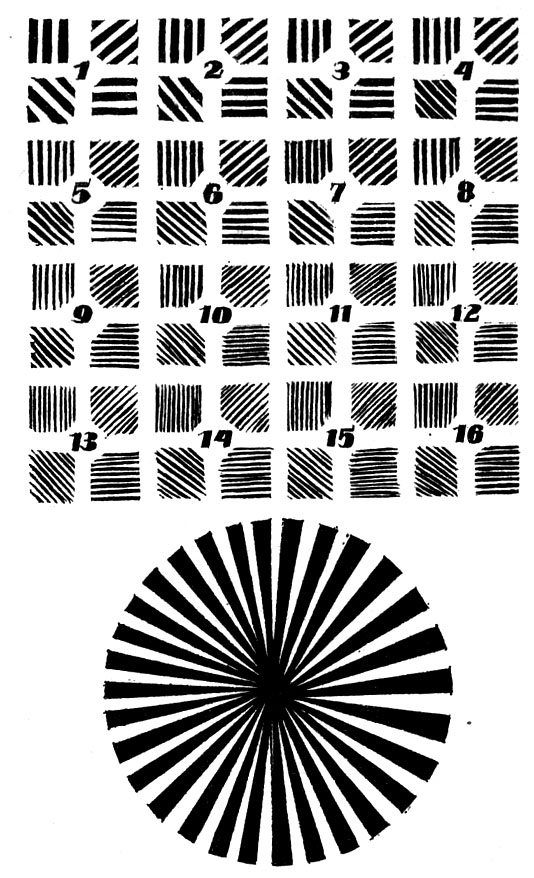RESOLUTION AND CONTRAST TRANSFER.
Reading the sharpness of the lens drawing is based on two measurements, namely the assessment of resolving power and contrast transferability, which means the degree of rendering the difference at the junction of the black and white planes.
Resolution is tested under average laboratory conditions using test charts, containing lines of progressively thinner thickness, at ever smaller intervals.

Drawing. Table for checking the image quality and resolving power of an optical instrument.
These tables are photographed on very fine-grained films and the number of lines is read at high magnification, still separable from each other in a one-millimeter section of the image. These measurements are made in the center of the image and on its edges, at full aperture of the lens and at smaller apertures, to determine the resolving power of the lens by the number of read lines (this should not be confused with the resolving power of the membrane, based on similar premises).
Type of glass, accuracy of grinding and lens workmanship, meticulous factory inspection to eliminate any lens showing even the slightest deviation from the norm, here's a high-quality secret (and high price) products of leading optical factories. These factories have more precise methods of testing resolving power than simply photographing test charts, but the assumptions of the study remain the same.
However, it is difficult to guarantee optimal focusing when photographing the test chart; the camera focus screen and film have grain (unless you use special focusing methods), the human eye is not a perfect instrument, the method of invocation is also important, and finally, reading the number of lines also depends on visual acuity.
The method itself is also imperfect. We evaluate the photographic image according to the impression, what our eye sees, much more sensitive to contrast than to the sheer number of lines per millimeter. If it is even a hundred or more, it doesn't matter in practice, because the eye can distinguish in the original photo 10 line, if not less, and under magnification, most of the lines will be lost in the membrane grain. On the other hand, a very clearly outlined contrast between black and white at their junction will be noticeable both in the original photo, as well as enlarged, giving the impression of high image sharpness, even if it has a much lower resolving power (this phenomenon was observed a long time ago on film emulsions and was then referred to as "acutance” - contour sharpness).